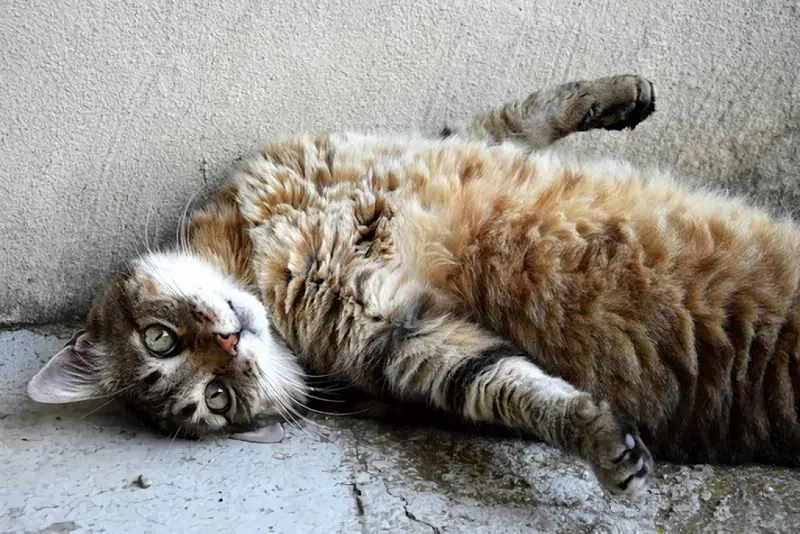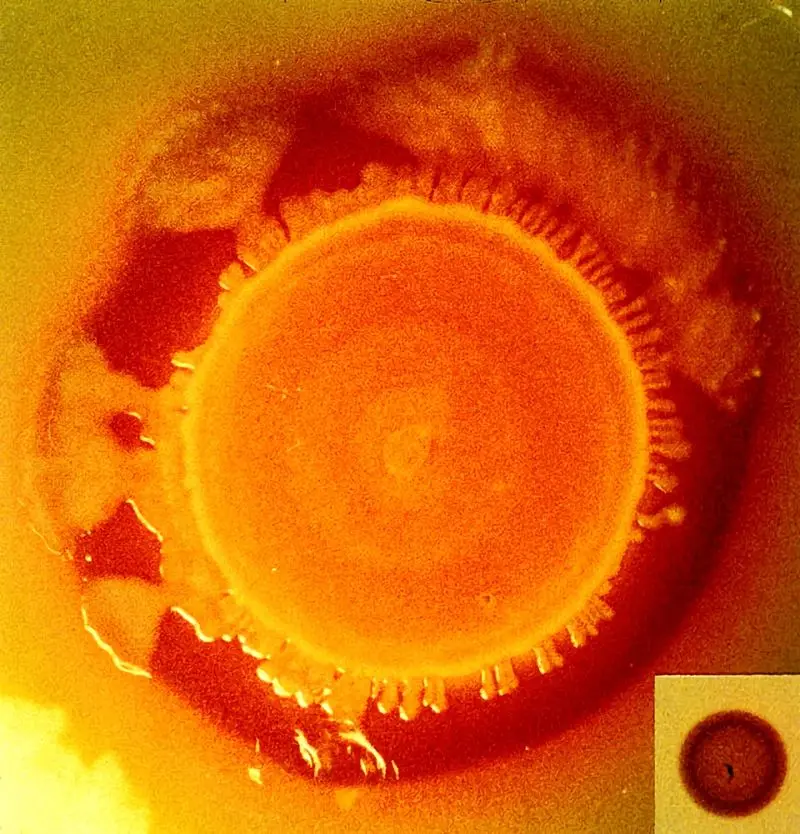 ↪ Doses - GLEPTOFERRON
Chemistry - Gleptoferron, a macromolecular complex of ferric hydroxide and dextran glucoheptonic acid, is available commercially as an aqueous colloidial solution. Each ml contains 200 mg of elemental iron.Storage, Stability, Compatibility Gleptoferron injection... ↪ Read more
↪ Doses - GLEPTOFERRON
Chemistry - Gleptoferron, a macromolecular complex of ferric hydroxide and dextran glucoheptonic acid, is available commercially as an aqueous colloidial solution. Each ml contains 200 mg of elemental iron.Storage, Stability, Compatibility Gleptoferron injection... ↪ Read more Veterinary Drug Handbook (VDH) is the reference veterinarians turn to when they want an independent source of information on the drugs that are used in veterinary medicine today.
-
 Is veterinary Liniment Gel safe for humans?
Is veterinary Liniment Gel safe for humans? -
 Giving Your Cat A Pill
Giving Your Cat A Pill -
 Dog Aggression
Dog Aggression -
 Dogs May Help Boost Infant Health
Dogs May Help Boost Infant Health -
 Animal-Assisted Therapy, Veterinary Social Work, & Social Work With People & Pets in Crisis
Animal-Assisted Therapy, Veterinary Social Work, & Social Work With People & Pets in Crisis -
 On-demand veterinary service gives advice on poorly pets
On-demand veterinary service gives advice on poorly pets -
 Should we stop throwing sticks for dogs?
Should we stop throwing sticks for dogs? -
 What does PU/PD mean in veterinary medicine?
What does PU/PD mean in veterinary medicine? -
 Can breathing in cat hair be harmful?
Can breathing in cat hair be harmful? -
 Bill calls for ban on sales of dogs, cats in Maine pet stores
Bill calls for ban on sales of dogs, cats in Maine pet stores -
 Common Meanings Of Cat Behavior
Common Meanings Of Cat Behavior -
 What does DVM stand for in veterinary?
What does DVM stand for in veterinary? -
 Curing Bad Cat Breath
Curing Bad Cat Breath -
 New Tracking Tool for Pathogen Investigators
New Tracking Tool for Pathogen Investigators -
Can binturongs be kept as pets?
-
 How long do instruments stay sterile after autoclaving veterinary?
How long do instruments stay sterile after autoclaving veterinary?
GLEPTOFERRON
 ↪ Doses - GLEPTOFERRON
Chemistry - Gleptoferron, a macromolecular complex of ferric hydroxide and dextran glucoheptonic acid, is available commercially as an aqueous colloidial solution. Each ml contains 200 mg of elemental iron.Storage, Stability, Compatibility Gleptoferron injection... ↪ Read more
↪ Doses - GLEPTOFERRON
Chemistry - Gleptoferron, a macromolecular complex of ferric hydroxide and dextran glucoheptonic acid, is available commercially as an aqueous colloidial solution. Each ml contains 200 mg of elemental iron.Storage, Stability, Compatibility Gleptoferron injection... ↪ Read more Doses - GENTAMICIN SULFATE
 ↪ Description - GENTAMICIN SULFATE
For small animals, one pair of authors (Aronson and Aucoin 1989) make the following recommendations with regard to minimizing risks of toxicity yet maximizing efficacy: 1) Dose according to animal size. The larger the animal, the smaller the dose (on a... ↪ Read more
↪ Description - GENTAMICIN SULFATE
For small animals, one pair of authors (Aronson and Aucoin 1989) make the following recommendations with regard to minimizing risks of toxicity yet maximizing efficacy: 1) Dose according to animal size. The larger the animal, the smaller the dose (on a... ↪ Read more GENTAMICIN SULFATE
 ↪ Doses - GENTAMICIN SULFATE
Chemistry - An aminoglycoside obtained from cultures of Micromonaspora purpurea, gentamicin sulfate occurs as a white to buff powder that is soluble in water and insoluble in alcohol. The commercial product is actually a combination of gentamicin sulfate C1, C2... ↪ Read more
↪ Doses - GENTAMICIN SULFATE
Chemistry - An aminoglycoside obtained from cultures of Micromonaspora purpurea, gentamicin sulfate occurs as a white to buff powder that is soluble in water and insoluble in alcohol. The commercial product is actually a combination of gentamicin sulfate C1, C2... ↪ Read more Doses - FUROSEMIDE
 Dogs & Cats: As a general diuretic: a) 2.2 - 4.4 mg/kg (lower dose suggested for cats) once or twice daily at 6-8 hour intervals PO, IV or IM (Package Insert; Lasix® - Hoechst) For cardiogenic or pulmonary edema: a) 2 - 4 mg/kg PO for chronic therapy (may increase up to 8 mg/kg IV for... ↪ Read more
Dogs & Cats: As a general diuretic: a) 2.2 - 4.4 mg/kg (lower dose suggested for cats) once or twice daily at 6-8 hour intervals PO, IV or IM (Package Insert; Lasix® - Hoechst) For cardiogenic or pulmonary edema: a) 2 - 4 mg/kg PO for chronic therapy (may increase up to 8 mg/kg IV for... ↪ Read more FUROSEMIDE
 ↪ Doses - FUROSEMIDE
Chemistry - A loop diuretic related structurally to the sulfonamides, furosemide occurs as anodorless, practically tasteless, white to slightly yellow, fine, crystalline powder. Furosemide has amelting point between 203° - 205° with decomposition, and a pKa of... ↪ Read more
↪ Doses - FUROSEMIDE
Chemistry - A loop diuretic related structurally to the sulfonamides, furosemide occurs as anodorless, practically tasteless, white to slightly yellow, fine, crystalline powder. Furosemide has amelting point between 203° - 205° with decomposition, and a pKa of... ↪ Read more Doses - FURAZOLIDONE
 ↪ Description - FURAZOLIDONE
Dogs: a) For amebic colitis: 2.2 mg/kg PO q8h for 7 days; For coccidiosis: 8 - 20 mg/kg PO forone week (Sherding and Johnson 1994a)Cats: a) For treatment of Giardia: 4 mg/kg PO twice daily (q12h) for 7 -10 day; if re-treatmentis required, elevated dosages or... ↪ Read more
↪ Description - FURAZOLIDONE
Dogs: a) For amebic colitis: 2.2 mg/kg PO q8h for 7 days; For coccidiosis: 8 - 20 mg/kg PO forone week (Sherding and Johnson 1994a)Cats: a) For treatment of Giardia: 4 mg/kg PO twice daily (q12h) for 7 -10 day; if re-treatmentis required, elevated dosages or... ↪ Read more FURAZOLIDONE
 ↪ Doses - FURAZOLIDONE
Chemistry - A synthetic nitrofuran-derivative antibacterial/antiprotozoal, furazolidone occurs as abitter-tasting, yellow, crystalline powder. It is practically insoluble in water.Storage, Stability, Compatibility Store protected from light in tight containers. Do not... ↪ Read more
↪ Doses - FURAZOLIDONE
Chemistry - A synthetic nitrofuran-derivative antibacterial/antiprotozoal, furazolidone occurs as abitter-tasting, yellow, crystalline powder. It is practically insoluble in water.Storage, Stability, Compatibility Store protected from light in tight containers. Do not... ↪ Read more Doses - FOMEPIZOLE, 4-METHYLPYRAZOLE
 ↪ Description - FOMEPIZOLE, 4-METHYLPYRAZOLE
Dogs: For treatment of ethylene glycol toxicity: a) Initially load at 20 mg/kg IV; at 12 hours post initial dose give 15 mg/kg IV; at 24 hours post initial dose give another 15 mg/kg IV and at 36 hours after initial dose give 5 mg/kg; may give... ↪ Read more
↪ Description - FOMEPIZOLE, 4-METHYLPYRAZOLE
Dogs: For treatment of ethylene glycol toxicity: a) Initially load at 20 mg/kg IV; at 12 hours post initial dose give 15 mg/kg IV; at 24 hours post initial dose give another 15 mg/kg IV and at 36 hours after initial dose give 5 mg/kg; may give... ↪ Read more FOMEPIZOLE, 4-METHYLPYRAZOLE
 ↪ Doses - FOMEPIZOLE, 4-METHYLPYRAZOLE
Chemistry - A synthetic alcohol dehydrogenase inhibitor, fomepizole is commonly called 4-methylpyrazole (4-MP).Storage, Stability, Compatibility Commercially available solutions should be stored at roomtemperature. The concentrate for injection may... ↪ Read more
↪ Doses - FOMEPIZOLE, 4-METHYLPYRAZOLE
Chemistry - A synthetic alcohol dehydrogenase inhibitor, fomepizole is commonly called 4-methylpyrazole (4-MP).Storage, Stability, Compatibility Commercially available solutions should be stored at roomtemperature. The concentrate for injection may... ↪ Read more Doses - FOLLICLE STIMULATING HORMONE-PITUITARY (FSH-P)
 ↪ Description - FOLLICLE STIMULATING HORMONE-PITUITARY (FSH-P)
Dogs: For induction of estrus: a) 20 IU/kg SQ (must convert Armour Units to IU; contact manufacturer to determinepotency of lot number) for 10 days. Proestrus usually occurs between days 7-10 andlasts 2-3 days. Give human... ↪ Read more
↪ Description - FOLLICLE STIMULATING HORMONE-PITUITARY (FSH-P)
Dogs: For induction of estrus: a) 20 IU/kg SQ (must convert Armour Units to IU; contact manufacturer to determinepotency of lot number) for 10 days. Proestrus usually occurs between days 7-10 andlasts 2-3 days. Give human... ↪ Read more FOLLICLE STIMULATING HORMONE-PITUITARY (FSH-P)
 ↪ Doses - FOLLICLE STIMULATING HORMONE-PITUITARY (FSH-P)
Chemistry - Follicle stimulating hormone-pituitary (FSH-P) is available commercially as a lyophilized powder. It is obtained from the pituitary glands of food producing animals. Reportedly, FSH-P may also have small amounts of... ↪ Read more
↪ Doses - FOLLICLE STIMULATING HORMONE-PITUITARY (FSH-P)
Chemistry - Follicle stimulating hormone-pituitary (FSH-P) is available commercially as a lyophilized powder. It is obtained from the pituitary glands of food producing animals. Reportedly, FSH-P may also have small amounts of... ↪ Read more Doses - FLUPROSTENOL SODIUM
 ↪ Description - FLUPROSTENOL SODIUM
Horses: Manufacturer's suggested dosage for all labeled indications (see above or package insert): a) 0.55 micrograms/kg (average dose 250 micrograms or 5 ml) IM To induce parturition in the mare: a) 2.2 micrograms/kg (0.0022 mg/kg) IM; delivery... ↪ Read more
↪ Description - FLUPROSTENOL SODIUM
Horses: Manufacturer's suggested dosage for all labeled indications (see above or package insert): a) 0.55 micrograms/kg (average dose 250 micrograms or 5 ml) IM To induce parturition in the mare: a) 2.2 micrograms/kg (0.0022 mg/kg) IM; delivery... ↪ Read more Popular Diagnoses
Packed cell volume (PCV, hematocrit) Reflex ovulator Mucolytic Microfilaricide Bronchodilator Hematocrit Glucocorticoid Monoamine oxidase inhibitor (MAOI) ↪ All veterinary diagnoseOther Diagnoses
Insulin dependent diabetes mellitus (IDDM) Insulin resistance Intermediate Host Intracellular Intramuscular Intranasal Intravenous IrisPopular Veterinary Clinics
VCA Welborn Animal Hospital, 7860 Washington Avenue Kansas City, KS 66112 USA MedVet Columbus, 300 East Wilson Bridge Road, Worthington, OH Rutland Veterinary Clinic & Surgical Center, 90 East Pittsford Road, Rutland, VT VCA Paradise Valley Emergency Animal Hospital, 6969 East Shea Boulevard Suite 150 Scottsdale, AZ 85254 USA Connecticut Veterinary Center & Pet ER, 470 Oakwood Ave West Hartford, CT 06110 USA Norway Veterinary Hospital, 10 Main St P.O. Box 273 Norway, ME 04268 USA Craig Road Animal Hospital, 5051 West Craig Road, Las Vegas, NV Abri Veterinary Hospital Inc, 1449 Trademart Boulevard Winston-Salem, NC 27127 USA ↪ All veterinary clinicsOther Veterinary Clinics
VCA Bering Sea Animal Hospital, 1347 East 74th Avenue Anchorage, AK 99518 USA VCA Eagle River Animal Hospital, 11710 Business Boulevard Eagle River, AK 99577 USA 43rd Ave Animal Hospital, 4426 West Cactus Road Glendale, AZ 85304 USA Adobe Veterinary Center, 8300 E. Tanque Verde Rd Tucson, AZ 85749 USA Alta Vista Veterinary Hospital, 4706 North 7th Avenue, Phoenix, AZ Animal Health Services, 37555 North Cave Creek Road, AZ Treasure Hill Pet Hospital, 1221 Breckenridge Drive Little Rock, AR 72205 USA Alameda Pet Hospital, 2275 Buena Vista Avenue Alameda, CA 94501 USAPopular Drugs
DOXYLAMINE SUCCINATE Doses - PENICILLIN V POTASSIUM Doses - METHYLPREDNISOLONE, METHYLPREDNISOLONE ACETATE, METHYLPREDNISOLONE SODIUM SUCCINATE ACEPROMAZINE MALEATE Doses - PREDNISOLONE, PREDNISOLONE SODIUM SUCCINATE, PREDNISOLONE ACETATE, PREDNISONE Doses - FURAZOLIDONE Doses - FERROUS SULFATE Doses - LEVAMISOLE ↪ All veterinary drugOther Drugs
Tru-Blu C-Hex 110 Tru-Blu Chlor Hex-Wash Gladiator Pre-Post Activator Gladiator Pre-Post Base Gladiator Barrier Base Gladiator Barrier Activator EVICT LIQUID WORMER StepSept PB-50Popular Terms
Subalbinotic Steatis Uteroverdin Paradoxical CSF acidosis Figure of 8 suture pattern Nerve root signature Ovariohysterectomy Abrev OVH Signalment ↪ All veterinary termOther Terms
Total body water Total digestible nutrients Abrev TDN Total mixed ration Abrev TMR Total parenteral nutrition Abrev TPN Total protein Abrev TP Toxemia Toxic epidermal necrolysis Abrev TEN Toxicityveterinary-help.com
© 2011-2025 Veterinary Clinics, Diagnoses, Terms and Drug Handbook Online

